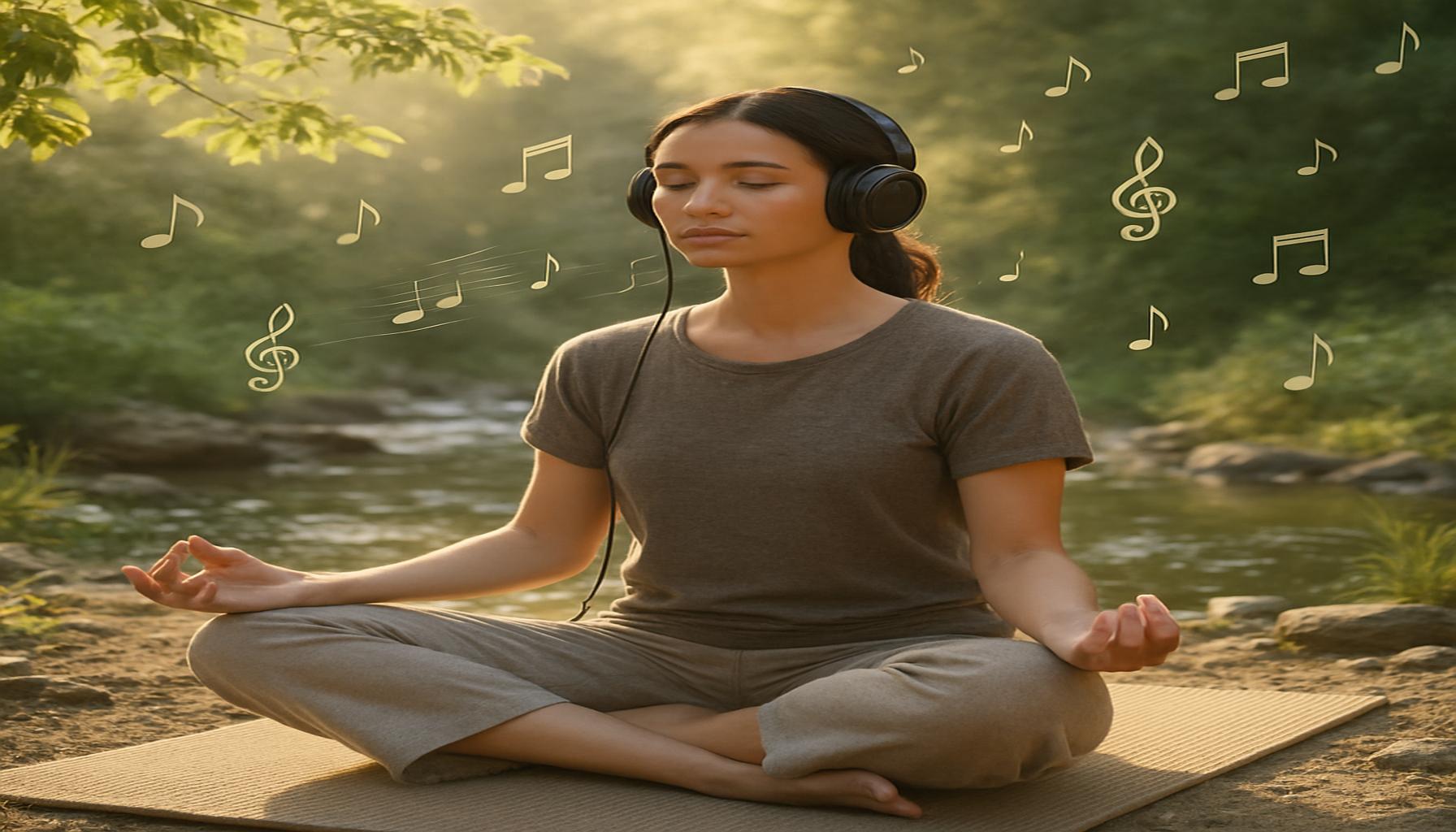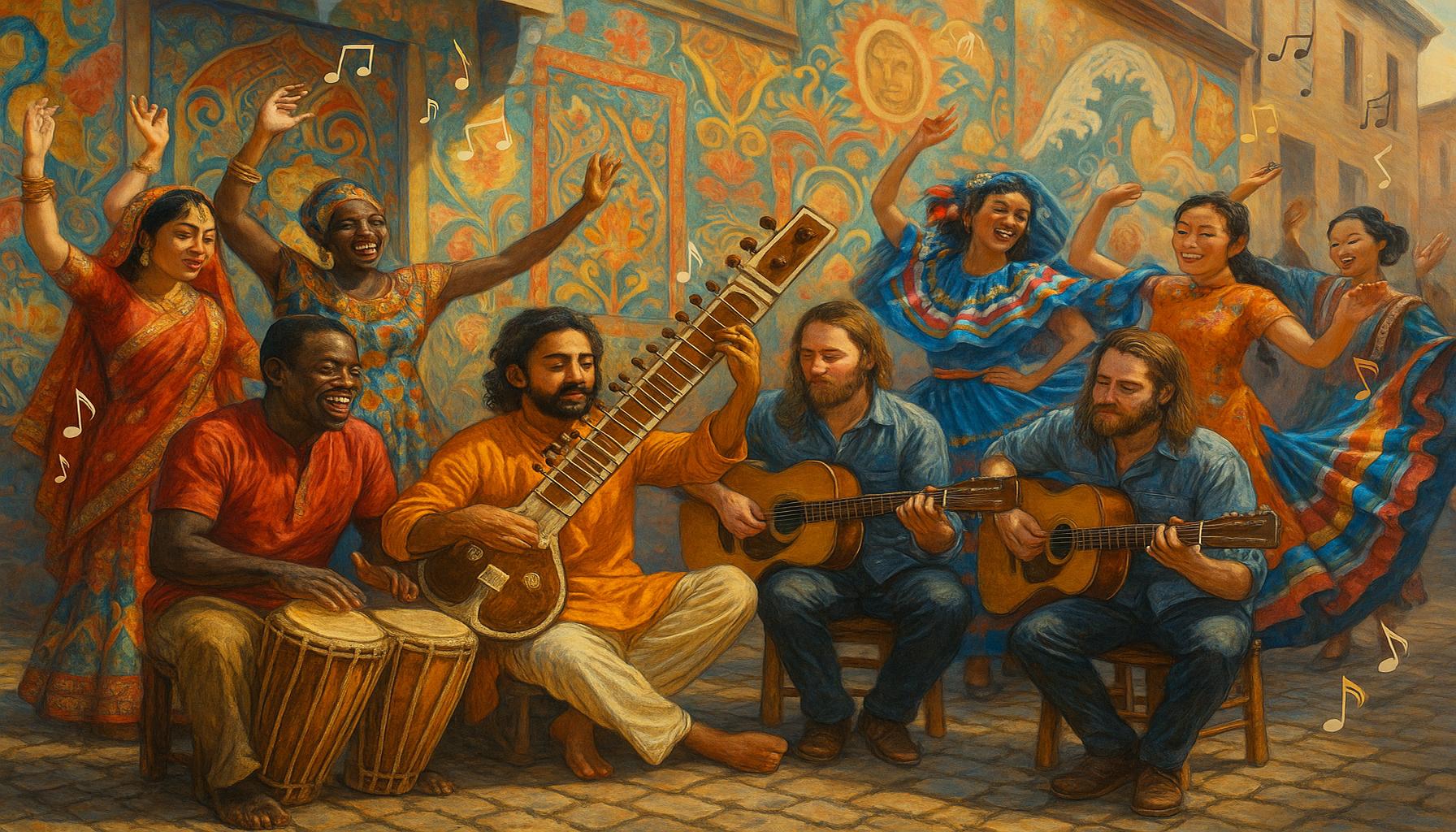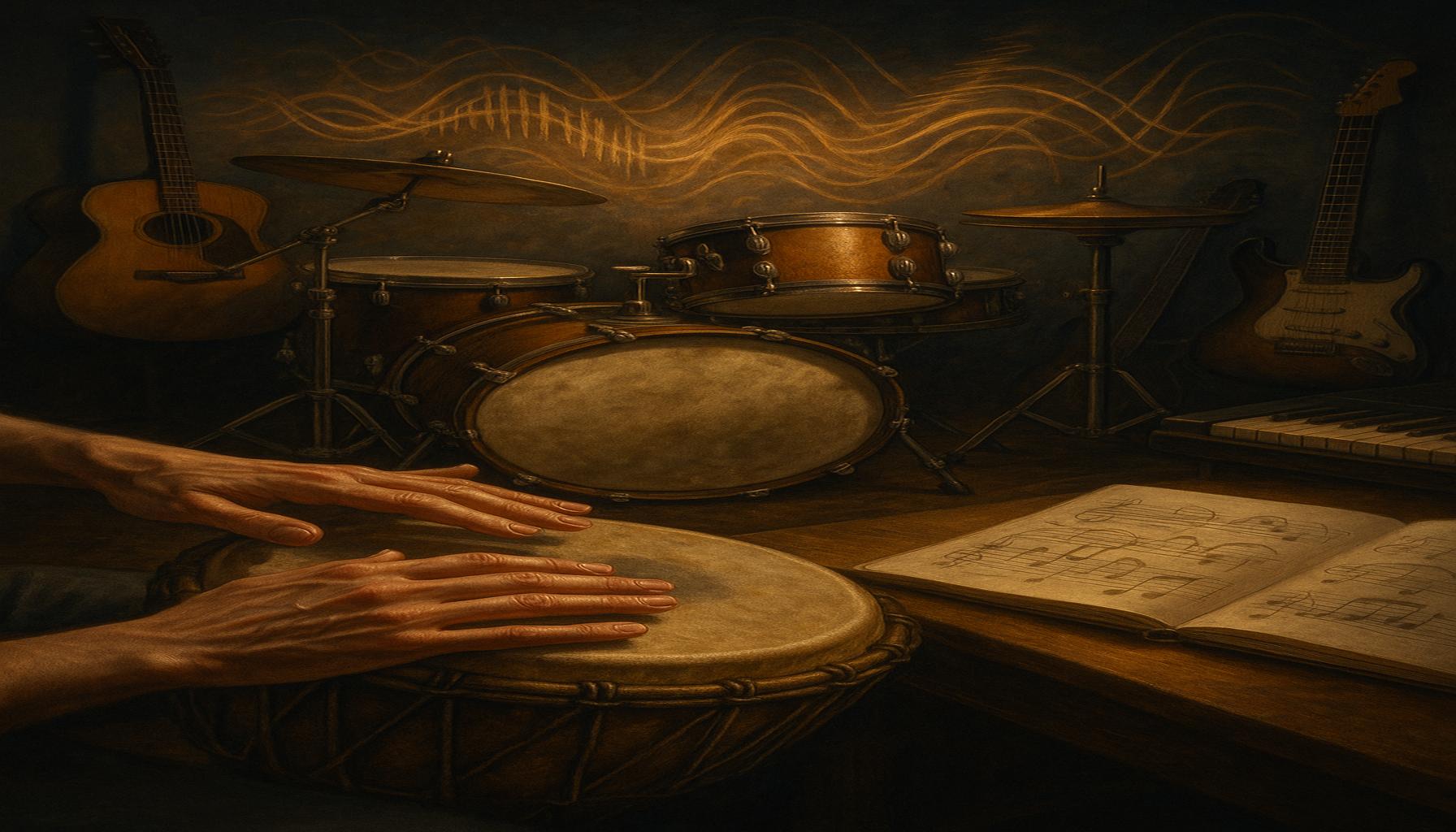Music and Meditation: How Sounds Can Stimulate Creativity and Well-Being

Exploring the Connection Between Sound and Inner Peace
Imagine a world where music and meditation effortlessly intertwine, nurturing both creativity and well-being. This connection is not just a fantasy; it’s a powerful reality affecting countless lives. Harnessing the right sounds can stimulate the mind, soothe the spirit, and inspire innovative thinking. Today, more than ever, individuals are recognizing the importance of sound in cultivating a peaceful mind and fostering greater creativity.
Research has shown that various types of music can enhance our meditative experiences. Consider these benefits:
- Relaxation: Calming melodies can lower stress levels, facilitating a deeper meditative state. For example, studies have demonstrated that listening to gentle piano compositions can decrease the heart rate and promote an overall sense of tranquility.
- Focus: Certain tracks help eliminate distractions, sharpening concentration during creative tasks. Music that features consistent rhythms, like classical sonatas, can enhance cognitive function and help individuals settle into a flow state conducive to creativity.
- Emotional Release: Music often evokes feelings that aid in processing emotions and enhancing personal insight. Many people find that songs with poignant lyrics or strong melodies resonate during their meditation, allowing for a deeper exploration of their inner feelings.
Moreover, the incorporation of sound in meditation practices is gaining popularity in the U.S., with many people exploring diverse genres. Whether it’s the rhythmic beats of drumming that keep participants engaged in traditional ceremonies, the soothing sounds of nature that foster a connection to the earth, or the ethereal tones of ambient music that create an atmosphere of contemplation, each sound can play a vital role in enhancing creativity and fostering a sense of well-being.
For example, many yoga studios across the country have begun integrating sound baths using Tibetan singing bowls or gongs, claiming that these sonic vibrations promote healing and relaxation. Participants often report experiencing profound emotional releases during these sessions, suggesting a strong interplay between sound and state of mind.
The exploration of music and meditation is not confined to traditional practices. Podcasts and apps dedicated to guided meditations increasingly utilize custom soundscapes to enhance user experience. As an emerging trend, sound therapy sessions offer individuals a tailored auditory experience designed to promote relaxation and emotional processing.

Are you ready to dive into the realms of how music and meditation can transform your life? By experimenting within these auditory landscapes, you could unlock new dimensions of creativity and emotional resilience that enhance your day-to-day living. As you embark on this transformative journey, consider the sounds that resonate with your spirit, leading you toward a fuller understanding of your inner peace.
DIVE DEEPER: Click here to discover more
The Science Behind Sound and Mental Clarity
The symbiotic relationship between music and meditation is supported by an array of scientific research highlighting how sound affects our mental landscape. Neurological studies reveal that engaging with music can stimulate brain regions associated with emotion, memory, and even creativity. Objects in our environment produce sound waves that vibrate our ears and resonate with our mind; thus, the type of sound we expose ourselves to can have varying effects on our mental state.
Research published in journals such as the Journal of Consciousness Studies indicates that music can trigger the release of neurotransmitters like dopamine, enhancing feelings of pleasure and creativity. This biochemical response is not only pivotal for enjoyment but also facilitates a state of flow—an optimal experience for creative thinking. The sounds we listen to while meditating can become conduits for these chemical processes, guiding us toward deeper levels of introspection.
To further understand the impact of music on meditation, it’s helpful to consider the different genres and their specific qualities that can enhance our practice:
- Nature Sounds: The sounds of waves crashing, birds chirping, or leaves rustling can ground us, creating a serene atmosphere that fosters tranquility and focus.
- Classical Music: The refined structures and soothing harmonies often induce relaxation, allowing listeners to access their creative depths while maintaining clarity of thought.
- Chanting and Mantras: Repetitive sound patterns not only help in concentration but also create vibrations that resonate with our inner self, aligning our thoughts and encouraging emotional release.
Moreover, the incorporation of rhythmic elements in soundscapes has garnered attention for its effectiveness in stimulating not just creativity but also cognitive performance. The Beat Therapy method, for instance, integrates rhythmic drumming to induce a meditative state while also serving as a creative outlet. Participants often report feeling a surge of inspiration, highlighting the role of rhythm in both creativity and well-being.
With the rise of digital platforms, access to a plethora of sound-based meditation resources has become effortless. Apps like Calm and Headspace offer tailored playlists designed to suit various moods and intentions. These soundtracks not only aid in meditation but can also be incorporated into daily routines, enhancing creativity during tasks such as writing, problem-solving, or even brainstorming sessions.
By exploring the intersection between music and meditation, we begin to understand that fostering creativity and well-being is not solely about silent reflection but involves engaging our auditory senses. As we unpack these elements, a broader horizon opens up, offering new ways to approach our mental health and creative endeavors.
| Category | Description |
|---|---|
| Music Therapy | Utilizes sound to improve mental health, reducing stress and anxiety. |
| Mindfulness Meditation | Incorporates soothing music to enhance focus and creativity during sessions. |
| Sound Healing | Employs vibrations from instruments like singing bowls to restore balance. |
| Enhanced Creativity | Music stimulates brain regions linked to motivation and inspiration. |
In exploring the intersection of music and meditation, we uncover transformative practices that promote well-being and trigger creativity. The profound benefits of engaging with sound go beyond mere auditory pleasure. For instance, music therapy often proves essential in therapeutic settings, mitigating anxiety and enhancing mental health.Moreover, practitioners often incorporate mindfulness meditation, where soothing soundscapes facilitate a deeper focus, allowing creative juices to flow. This interconnectedness is further exemplified in sound healing methods, where vibrations from singing bowls resonate through the body to restore energetic harmony.Ultimately, the fusion of sound and self-awareness unveils pathways to enhanced creativity, making it critical for anyone seeking inspiration and mental rejuvenation to explore how music and meditation can reshape their lives.
DISCOVER MORE: Click here to learn about the impact of music on mental health
The Role of Music in Enhancing Meditation Practices
The integration of music into meditation practices extends beyond mere ambiance—it can significantly alter the outcome of the experience itself. Many practitioners testify that combining sound with meditation not only heightens awareness but elevates feelings of joy and creativity. The auditory stimulation provided by music can create a conducive environment for individuals seeking to delve into their subconscious, unraveling insights that support personal growth and innovation.
One fascinating aspect of this blend is the practice of sound healing, which employs various instruments, including Tibetan singing bowls, gongs, and tuning forks. These instruments produce a range of frequencies that resonate with the body’s energy centers, often referred to as chakras. Studies suggest that exposure to these frequencies can promote physical relaxation and emotional balance, ultimately leading to enhanced creative expression. The harmonic vibrations encourage the body to release tension, paving the way for a more liberated mental state conducive to creativity.
The effectiveness of music in enhancing meditation can also be attributed to its ability to establish a rhythmic structure. Research indicates that rhythm can be perceived in a myriad of ways, influencing both our emotional responses and cognitive functions. For instance, beats per minute (BPM) can affect heart rate and respiration, creating a bodily synchronization that enriches the meditative experience. Upbeat tracks with higher BPM may stimulate energetic movement and creativity, while slower compositions can lead into deeper meditation, allowing thoughts to flow freely.
Innovative artists and entrepreneurs have harnessed these principles in unique ways to enhance their creative processes. Many successful writers, for example, listen to instrumental playlists when they seek inspiration or intend to spark new ideas. The absence of lyrics enables the mind to focus solely on concepts and flow without the distraction of verbal content. The renowned author Haruki Murakami has openly shared his ritual of listening to classical music while running to keep his mind agile, fostering a creative atmosphere that yields fruitful ideas.
Interestingly, the connection between music and meditation is also being explored in therapeutic settings. Programs involving music therapy have emerged, where clinicians incorporate sound experiences to help patients express emotions and relieve psychological distress. According to the American Journal of Music Therapy, participants engaging in these programs have shown considerable improvement in reducing their anxiety and depression levels, culminating in heightened creative output post-therapy sessions.
As the wellness industry embraces these discoveries, we see a rise in workshops dedicated to harmonizing music and meditation. Collaborations between musicians and meditation instructors have become increasingly popular, offering dynamic sessions that integrate breathwork, mindful listening, and sound exploration. These immersive experiences have been reported to create a sense of community, further enriching the meditative and creative process.
The ongoing research into the synergy of music and meditation illustrates promising potential for enhancing overall well-being. As individuals navigate their own creative journeys, the diverse elements of sound provide an invitation to explore new dimensions of thought and innovation, making this a valuable intersection for both mental health and artistic expression.
DIVE DEEPER: Click here to unlock your storytelling potential
Conclusion
In summary, the fusion of music and meditation presents an exciting frontier for enhancing creativity and overall well-being. As we’ve explored, the use of sound not only elevates the meditative experience but also nurtures emotional health and inspires innovative thinking. The ancient practice of sound healing, alongside modern insights into how rhythm and frequency impact our physiological state, reflects a growing understanding of the profound influence that sound can have on our mental and emotional landscape.
Furthermore, the successful leveraging of musical elements in creative pursuits—whether by writers, artists, or therapists—illustrates the versatility of sound as a tool for unlocking human potential. With a wealth of scientific studies backing these claims, the connection between music and meditation is being embraced not just in personal practices but across wellness industries and therapeutic realms. Workshops and programs that marry these disciplines are increasingly commonplace, underscoring a communal appreciation for the powerful synergy at play.
As individuals continue to navigate their paths in search of clarity and inspiration, the intersection of music and meditation stands as an open invitation to explore new dimensions of thought, creativity, and emotional tranquility. By diving deeper into this harmonious relationship, we may unlock unparalleled potentials within ourselves, positioning sound as a vital ally in the quest for holistic well-being and artistic expression. The journey into this auditory landscape is only just beginning, beckoning us to listen, reflect, and create.


